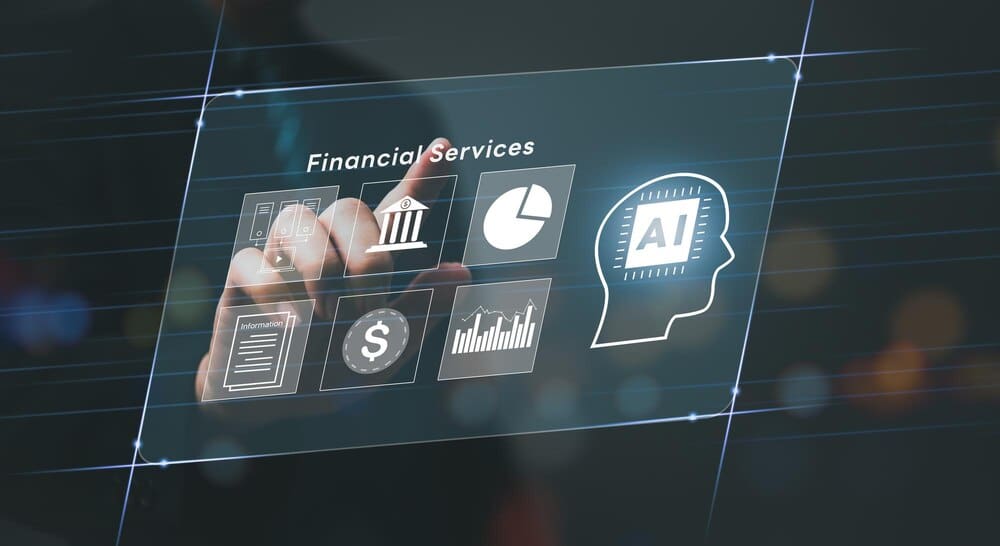The financial advisory landscape is undergoing a seismic shift, driven by the rapid maturation of artificial intelligence. For decades, truly personalized financial guidance has been a luxury service, accessible primarily to high-net-worth individuals who could afford a dedicated human advisor. Now, FinTech innovators and established financial institutions are deploying sophisticated AI systems that promise to democratize this expertise, offering hyper-personalized, real-time financial advice to the mass market. This technological revolution, happening right now, leverages big data, machine learning, and natural language processing to deliver a new class of service that goes far beyond the first-generation robo-advisors, fundamentally changing how consumers manage their money, plan for the future, and build wealth.
What is AI-Powered Financial Advice?
At its core, AI-powered financial advice is the use of intelligent algorithms to analyze a person’s complete financial picture and provide tailored, actionable recommendations. Unlike traditional advice, which relies on periodic meetings and manual analysis, AI operates continuously and holistically. It ingests a vast stream of data, from bank transactions and investment performance to credit card spending and savings habits.
This goes far beyond the simple portfolio allocation of early robo-advisors. True AI financial planning uses machine learning to identify patterns, predict future cash flows, and model the impact of various financial decisions. It understands context and can proactively offer guidance on everything from debt consolidation and tax optimization to saving for a down payment on a house.
The goal is to create a dynamic, digital financial planner that lives in your pocket. It’s a system capable of answering complex questions and providing sophisticated strategies that were once the exclusive domain of highly paid professionals, making high-caliber financial management accessible to everyone with a smartphone.
The Evolution from Robo-Advisors to True AI Planners
The journey to the current state of AI in finance began with a simpler, yet disruptive, innovation: the robo-advisor. These platforms laid the essential groundwork for what was to come.
The Robo-Advisor Foundation
Pioneered by firms like Betterment and Wealthfront in the late 2000s, robo-advisors automated the principles of modern portfolio theory. They offered consumers a low-cost, accessible way to invest in diversified portfolios of exchange-traded funds (ETFs). Based on a user’s answers to a simple risk tolerance questionnaire, the platform would automatically select and manage investments, performing tasks like rebalancing and tax-loss harvesting.
While revolutionary for democratizing passive investing, these first-generation platforms were limited. Their advice was largely confined to the investment portfolio and lacked a nuanced understanding of a user’s broader financial life, such as cash flow management, debt, or short-term savings goals.
The Leap to Hyper-Personalization
The future of financial advice lies in moving beyond portfolio management to what can be called hyper-personalization. The new wave of AI-driven platforms connects to a user’s entire financial ecosystem through open banking APIs. They see your income, your daily spending, your mortgage payments, your student loans, and your retirement accounts all at once.
With this comprehensive view, the AI can offer far more specific and timely advice. For instance, it might notice you have a surplus of cash in a low-yield checking account and a high-interest credit card balance. The system could then proactively suggest a strategy to use the idle cash to pay down the expensive debt, calculating the exact interest savings for you.
The Role of Big Data
This level of personalization is only possible because of big data. The AI models are trained on billions of anonymized data points, learning the intricate relationships between spending, saving, investing, and life events. This allows the system to not only analyze your past behavior but also to predict future needs and opportunities.
For example, by analyzing data from millions of users, an AI might learn to identify the early financial indicators of someone preparing to buy a home. It could then proactively provide a personalized savings plan, advice on improving a credit score, and educational content about the mortgage process, all before the user even begins to search for a realtor.
Key Technologies Driving the AI Revolution in Finance
Several key technologies are converging to make this new era of financial advice a reality. Each plays a distinct but complementary role in creating a seamless and intelligent user experience.
Machine Learning (ML) and Predictive Analytics
Machine learning is the engine of the AI advisor. ML algorithms sift through your financial data to learn your unique habits and patterns. This enables predictive analytics, which can forecast your account balance at the end of the month, alert you to a potential overdraft, or identify opportunities to increase your savings rate without impacting your lifestyle.
These models become more accurate over time, learning from your feedback and financial decisions. If you consistently follow its advice to save more, the AI will adjust its future recommendations to be more ambitious. If you ignore certain alerts, it will learn what is less important to you.
Natural Language Processing (NLP)
Natural Language Processing is what makes the AI feel human and accessible. NLP gives the system the ability to understand and respond to questions asked in plain English. Instead of navigating complex menus, a user can simply type or speak a question like, “Can I afford to take a $3,000 vacation in July?”
The AI, powered by NLP, can parse this request, analyze the user’s current savings trajectory and projected cash flow, and provide a detailed, easy-to-understand answer. This conversational interface dramatically lowers the barrier to engaging with one’s finances.
Generative AI’s Emerging Role
The latest breakthrough, generative AI, is poised to take this a step further. Models like those developed by OpenAI and Google can synthesize vast amounts of information to generate entirely new content. In a financial context, this means an AI could write a completely customized, multi-page financial plan for a user in seconds.
It can explain complex topics like asset allocation or the difference between a Roth and a traditional IRA in a simple, personalized narrative. This moves the interaction from a simple Q&A to a rich, educational dialogue, empowering users with deeper financial literacy.
Challenges and Ethical Considerations on the Horizon
Despite its immense promise, the rise of AI in financial advice is not without significant challenges and ethical risks that regulators, developers, and consumers must navigate carefully.
Data Privacy and Security
To be effective, an AI advisor requires access to an unprecedented amount of sensitive personal financial data. This concentration of information creates a high-value target for cybercriminals. A single data breach could be financially devastating for millions of users, making robust security protocols and data encryption paramount.
Algorithmic Bias
AI models are trained on historical data, and if that data reflects existing societal biases, the AI can learn and perpetuate them. For example, if historical loan data shows that certain demographics were approved for credit at lower rates, an AI trained on this data might unfairly penalize applicants from those same groups, even if they are creditworthy. Ensuring fairness and eliminating bias from algorithms is a critical and ongoing challenge.
The “Black Box” Problem
Some of the most powerful AI models operate as a “black box,” meaning even their creators cannot fully explain the specific logic behind a particular recommendation. This lack of transparency poses a major problem for financial regulation and accountability. If an AI gives demonstrably bad advice that leads to a financial loss, who is at fault? How can regulators audit a decision-making process that is not fully understood?
The Human-AI Hybrid Model: The Best of Both Worlds?
Rather than a future where AI completely replaces human advisors, the most likely and effective outcome is a hybrid model. In this scenario, AI serves as a powerful tool that augments the capabilities of human professionals, creating a partnership that leverages the best of both worlds.
The AI can handle the laborious tasks of data collection, analysis, and routine monitoring, freeing up the human advisor to focus on higher-value activities. These uniquely human skills include building trust, providing empathy during stressful life events like a job loss or inheritance, and understanding the complex, often unstated emotional goals behind a client’s financial decisions.
This symbiotic relationship allows for superior service at scale. The AI provides the data-driven insights and 24/7 monitoring, while the human provides the wisdom, ethical oversight, and personal touch that technology cannot yet replicate.
The future of financial advice is here, and it is powered by artificial intelligence. This technological shift is moving financial guidance from a static, periodic service for the wealthy to a dynamic, continuous, and personalized utility for everyone. While significant hurdles around security, bias, and regulation remain, the potential to improve financial literacy and outcomes for millions is undeniable. The ultimate destination is likely not a world of robots or humans, but one where intelligent technology empowers human expertise to deliver a new standard of financial well-being.







